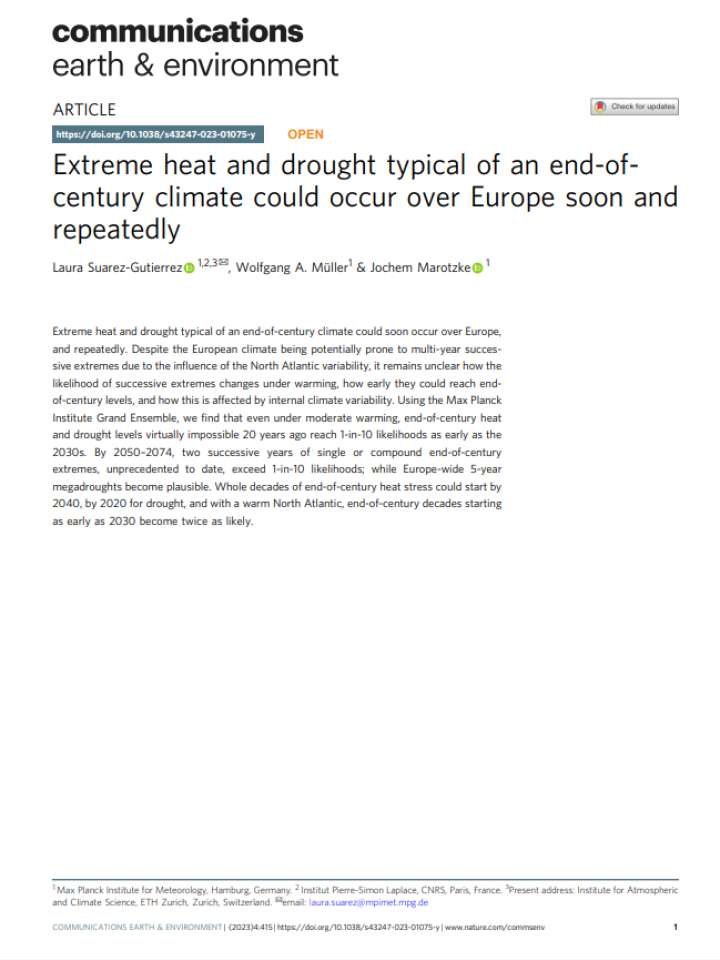Extreme heat and drought typical of an end-of-century climate could occur over Europe soon and repeatedly
The goal of this publication is to determine how internal climate variability leads to worst-case successive and compounding heat and drought stress accumulating to produce the most extreme decades, and how soon into the near future such heat and drought loaded decades could bring a taste of the end-of-the-century reality. The article uses cumulative excess metrics that combine the effects of both intensity and persistency of all events within a season, as a sum of every instance beyond a given threshold (see Methods). The publication expands the existing cumulative heat framework based on maximum temperatures, here referred to as Excess Heat, to cover three additional excess metrics that reflect extreme summer heat stress and May–October drought stress: Humid Heat, Night Heat, and Rain Deficit.
Using the Max Planck Institute Grand Ensemble, researchers find that even under moderate warming, end-of-century heat and drought levels virtually impossible 20 years ago reach 1-in-10 likelihoods as early as the 2030s. By 2050–2074, two successive years of single or compound end-of-century extremes, unprecedented to date, exceed 1-in-10 likelihoods; while Europe-wide 5-year megadroughts become plausible. Whole decades of end-of-century heat stress could start by 2040, by 2020 for drought, and with a warm North Atlantic, end-of-century decades starting as early as 2030 become twice as likely.
Explore further
